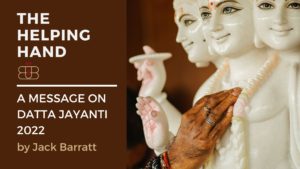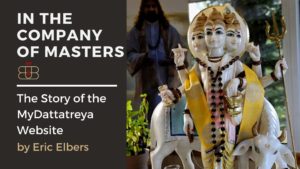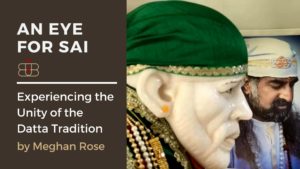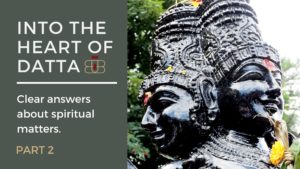Overview and Significance
Kadaitswami was a dynamic Satguru who revived Shaivism in Catholic-dominated Jaffna, Sri Lanka, in the 1800s. Kadaitswami was a powerful Siddha, standing two meters tall, whose fiery marketplace talks converted thousands back to Shaivism. He was a high court judge who refused to confer the death penalty and renounced his career at middle age to become a sannyasin. Directed by his Satguru Rishi of the Himalayas to be a worker of miracles, he performed siddhis talked about to this day – turning iron to gold, drinking molten wax, disappearing, and appearing elsewhere.
Kadaitswami of Jaffna was honoured as a Siddha; he was known earlier as Swami Mukti Ananda in Karnataka, India. He came to Jaffna in 1860, invited by Vairamuttu Chettiar of Nallur. As he was primarily seen at Periakadi, Jaffna bazaar, he was called Kadaitswami. He often frequented the Nallur temple surroundings; Chellappah, then a young novice, recognized Kadiatswami’s spiritual stature. They were drawn to each other mutually, and Kadaitswami blessed Chellappah. Kadaitswami’s inclination was towards the Tantric path. He did not discriminate against anyone based on caste or creed and visited their homes unreservedly; they served him with their usual fare of toddy, fish, and meat, all of which he accepted with an attitude of dispassion. His actions upset the feelings of some orthodox Shaivites devoted to him. He attained Mahasamadhi in 1891.
Kadaitswami meaning ‘Marketplace swami,’ was the 159th Satguru of the Nandinatha Sampradaya’s Kailasa Parampara. He initiated Chellappaswami as the next Satguru in the parampara. Kadaitswami’s initiation name was Muktiyanandaswami.
Life History
A high court judge sat at the end of a trial, faced with the duty to pass a sentence of death on a convicted murderer. The man was guilty, but the judge refused to fatally condemn a fellow human being. Instead, he left the bench, quit the law, and renounced the world. He became a wandering monk. In time he met the Rishi of the Himalayas and was initiated into the inner teachings. Eventually, he settled in Sri Lanka’s port city of Jaffna. It was around 1860. He had no home, no ashram or yoga school. He could be found walking in the marketplace, speaking of man’s oneness with God Shiva and taking his meals with everyday folks. The people called him Kadaitswami, the ‘Marketplace Swami.’ Kadaitswami swept through the Jaffna markets, carried by lengthy strides and ever aware of his presence among the people. He was a mystery to one and all, an affable sage who somehow always brought joy to shoppers and prosperity to shopkeepers.
One day Kadaitswami was invited for lunch at the home of a devout but low-income family. With little food in the house and not wanting to offend a great soul, the wife did the unthinkable – she sold her cherished gold wedding necklace to buy provisions. When the meal was finished, the swami asked her to bring a piece of iron. A rusty old rod was found. Kadaitswami took it aside, spat on it, and handed it back. It had turned into gold! Today this is a wealthy coconut oil family, though it is said they never sold the golden rod.
During the last few years of his life, Kadaitswami ceased going back to Mandaitivu and remained in the Jaffna area. He took a liking to a small, privately owned temple to Lord Nataraja in Neeraviady, a few kilometers from the marketplace. A hut was built for him in the compound behind the temple, where he stayed with Kulandaivelswami. This became his domain, a place of solitude and communion. He declared to his followers, ‘This is Chidambaram,‘ referring to the renowned temple of Lord Nataraja, the Cosmic Dancer, in South India, which is mystically thought of as the centre of the universe.
It was at this spot, on October 13, 1891, Shatabhishak nakshatra, that Kadaitswami made his Great Departure from this Earth plane. Kulandaivelswami was with him in those final moments. He had instructed his shishyas to inter his body in a crypt, as is often done with illumined souls. Kulandaivelswami oversaw the samadhi ceremony and interment at the site of his hut. Soon afterward, a large stone was placed on the spot, and devotees regularly conducted pujas to it. A year later, in 1892, in keeping with Swami’s orders, a sizable temple was built enshrining a Sivalingam from Benares, India, which took the place of the large stone.
Nearly a century later, when the samadhi temple had fallen into disrepair, a group of boys who played cricket nearby began having dreams about a tall, slim man who told them they should restore the structure. When the parents heard about the dreams, they realised that it was Kadaitswami who the boys had seen and told them not to play there anymore. The boys rallied together, involved the Chettiar community and in the early 1980s began renovating the temple.
In 1983, during Satguru Sivaya Subramuniyaswami’s (the disciple of the disciple of Kadaitswami’s foremost disciple, Chellappaswami) last visit to Jaffna, the Kadaitswami Temple temple committee, mostly youth, invited him to set the first stone for a new tower above the sanctum. He climbed a rickety bamboo ladder to the top, set the stone, and performed a small puja. The renovations continued, and the final consecration ceremony was held in 1985.
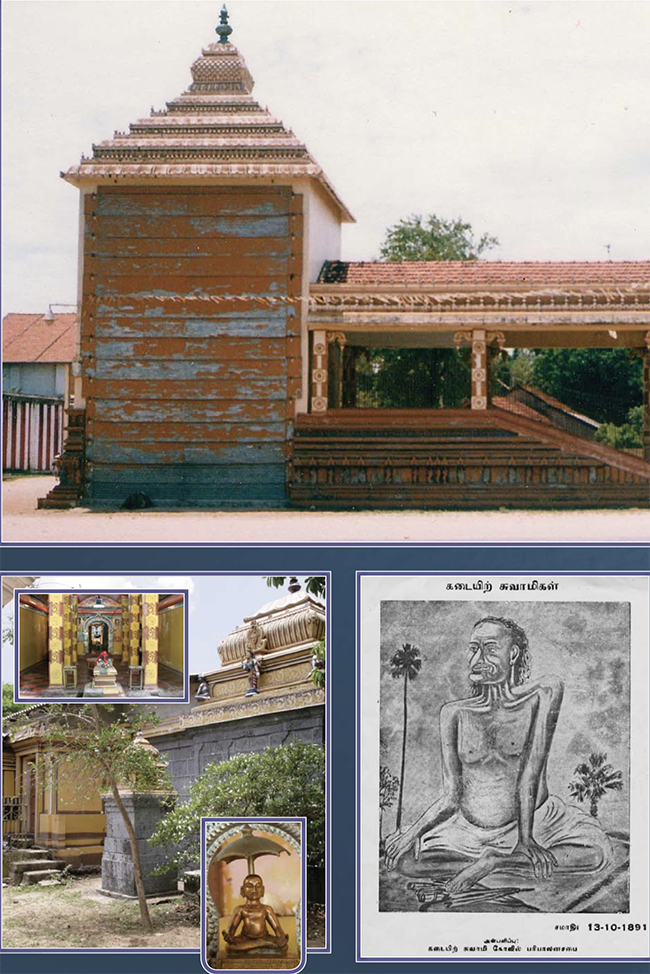
Tradition and Gurus
Chellappa Meets Kadaitswami
One day a young sadhu came to the pavilion. His eyes revealed a profound depth, and Kadaitswami recognised something special in him. After they spent an unknown time together, Kadaitswami met his disciple in the marketplace. Fetching a rupee from a woman peanut vendor, he wrapped it in a betel leaf and gave it to the young shishya. In those days, rupees were large coins. The bundle covered half the palm of the sadhu, who would later become known as Chellappaswami. Kadaitswami then struck him on the back with his umbrella and sent him away.
Future devotees spoke of the coin-giving as Kadaitswami’s unconventional Natha way of initiating his shishya into sannyasa, the state of world renunciation. Decades later, Chellappaswami’s disciple, Yogaswami, recounted this great spiritual experience as it was told to him:
‘Lo, with a silver rupee coin, did Kadai Swami infuse his grace on Chellappar! The world looked upon him as a madman. From his empyrean height, he stood aloof, far from the madding crowds’ ignoble strife.‘
The two often met during the next four years and went on long walks together. Chellappaswami said little or nothing of the time he spent with Kadaitswami, and history has almost no memory of it.
To Kadaitswami, all devotees were the same regardless of differences in race or creed, high or low, rich or poor. He treated one and all with equal affection and remedied their physical and mental ills and their poverty, too. Knowing this, the devotees began to flock around him in larger numbers. There were many humble requests even from the poor to visit their homes. At such times they offered him their usual non-vegetarian meals, including liquor. Above likes and dislikes, he accepted what was offered.
When this became known, there was anger and resentment amongst orthodox Hindu Shaivites. Chellappaswami, the Guru of Siva Yogaswami, could not bear to hear from devotees that Kadaitswami, whom he honoured, was consuming liquor. It was something altogether unbelievable. Wishing to test him, he went to Grand Bazaar in search of Kadaitswami with a bottle of liquor carefully concealed under his shawl. As Chellappar went and sat beside him, Kadaitswami cried, ‘Oh ho, so you too have begun to treat me with liquor! All right, take the bottle that you have concealed under your shawl and open it. Let me share this with you and all these devotees here!‘ Chellappaswami, trembling, took out the bottle, but found that the bottle was empty upon opening it. The dismayed disciple asked forgiveness and returned to Nallur teradi.
On another occasion, Kadaitswami presented a bottle of arrack to Chellappaswami, saying it was time for his disciple to have his first drink. After all, did he consider himself better than his Guru? Chellappaswami, unable to refuse anything his Guru offered, took the bottle and tipped it up to his mouth. What had the smell of arrack to his nose tasted like honey on his tongue.
Combatting Christianity
In those days, the British Christian missionaries controlled most of the education in Jaffna. They had the best schools, based in the English language. If Hindus wanted their children to attend these schools and get the most promising education, they had to give up wearing their traditional clothing, holy ash, and pottu, submit to attending Christian religious classes and even attend daily mass. This insidious attempt to convert the children to Christianity was effective. Often unbeknownst to their parents, the children slowly adopted the Christian teachings. As intended by the Christians, this strategy disrupted the Hindu unity of the family.
Since they had to have a Western education to get a decent job with the British government, many attended the missionary schools. Among those, many converted to Christianity, to their family’s dismay. These innocent children would hear morning prayers in school, then share in pujas in their homes, where their family life remained true to Shaivite tradition. The compromise ruined their spiritual lives, which was precisely the missionaries’ purpose. Children found themselves on two different paths simultaneously, one at home with their mother and another in the classroom with the nuns. What Shaivite rituals they performed were done without understanding, and what Christian services they took part in were performed hollowly as part of the daily school regimen.
Kadaitswami served as a counterweight to this dogmatic onslaught. He was more articulate than any previous holy man in Sri Lanka, having been a lawyer and judge. He frequented Vannarpannai Shiva Temple, about two kilometers from the marketplace, and sang songs to Parvati. After worship, he gave rousing spiritual discourses. During his years in Jaffna, Kadaitswami spoke so often in front of the Shiva temple that a thatched pavilion was built. He stood on a platform in the pavilion and lectured to hundreds of men and women who came to worship or were on their way to nearby markets. An eloquent orator, he spoke with missionary verve. Though Swami’s native tongue was Telugu, he also spoke proficient Tamil (though in a dialect that was difficult for Sri Lankans to follow), along with Kannada, Malayalam, and English.
His Upadeshas about the greatness of Shaivism inspired renewed devotion in the people, who were accustomed to hearing sermons only from the Christian fathers seeking to convert them. Not for a long time had someone stood so boldly in public and said what was in their heart of hearts. Kadaitswami became the voice of their heritage, the protector of Shaiva Dharma, as he boldly reminded them of the beauties and potencies of their born faith. Over the years, tens of thousands heard him speak from the Vannarpannai platform, and large numbers of those were reinspired to hold fast to their ancient ways of Shaivite Hindu life.
There was, during those years, a learned scholar in Jaffna, twelve years Kadaitswami’s younger, by the name of Arumuga Navalar, the father of Sri Lankan Tamil prose. Before him, all Tamil was written in verse form. At one point in his life, Navalar translated the Bible, which he regarded as inferior to the Hindu scriptures, into Tamil to show his people the teachings it contains. These two firebrands were deeply dedicated to preserving Shaivite culture in Sri Lanka, recognising the threats their people faced. They worked together to open several Hindu schools to offset the prevailing Christian education that so direly threatened the faith and futures of Tamil children. The first of these, known simply as Hindu High School, was begun at Vannarpannai in Jaffna, by the side of the Shiva temple where Kadaitswami preached to crowds. Later, this became the Jaffna Hindu College, the foremost educational institution of the North.
Miracles
Kadaitswami, one of the well-known Gurus and Siddas, lived in the mid-1800s in Jaffna, Sri Lanka. Even though he roamed around in Jaffna bazaars like a mad man, he performed many miracles and guided many on the spiritual path. Kadaitswami had been a judge in India, but he renounced that life, became a swami, and traveled to Jaffna. His name was Swami Mukthianantha, but because he roamed around Jaffna bazaars, he became known as Kadaitswami. (Kadai means shop in Tamil).
Jail Break
In those days, the British ruled Sri Lanka. One day, one of the British officers saw Kadaitswami roaming around like a madman. He ordered the police to arrest him, putting him in jail in the Jaffna fort. The person in charge of the prisons at that time was a Tamil Sergeant named Sinnathamby. That night Sinnathamby was on duty; he heard a loud noise from Kadaitswami’s prison cell. When he went to check on him, the cell was empty. The next morning, Sergeant Sinnathamby set out in search of Swami. He was looking for him at the Jaffna marketplace. Swami was seated under a Banyan tree and shouted, ‘Hey Sinnathamby – Are you looking for me?‘ At that moment, Sergeant Sinnathamby renounced everything and became a disciple of Kadaitswami. Later he became known as Sergeant Swami among the Jaffna people. His disciple, Kanagaratnam Swami, founded the Vethantha Madam.
Magical Moments at Mandaitivu
One day at his place in Mandaitivu, Kadaitswami was preparing lunch with two disciples, Niranjananandaswami and Chinmayanandaswami. This was observed by Nanniyar’s wife. Suddenly, Kadaitswami shouted, ‘A karmi is coming! Quick, we must go.‘ Placing all the pots in a wooden box used for storing leftover foods, they ran away. Before long, a disgruntled man arrived and told the woman he was looking for Swami. She said he had just left. The man waited and waited all day, but Swami never returned. He stayed for three days, and Nanniyar’s wife fed him. As soon as the man left, Swami reappeared with his two brother monks and said, ‘Now we can eat.‘ They went to the storage box. The woman was thinking, ‘Ugh, they are going to eat spoiled, three-day-old food!’ When they opened the box, steam was rising from each pot as if it had just been cooked, and to the wife’s astonishment—the three enjoyed a fresh, hot lunch.
On one visit to the island, Swami called Nanniyar’s family together and performed a homa in the backyard, as if doing an antyeshti (funeral ceremony). They assumed Swami was conducting his own last rites, as a sign that he might soon leave his body. After the homa, he told them not to go to the temple for thirty-one days. ‘Now this,’ they thought, ‘is strange because Swami is still alive.’ In a few days the family received news that their son had died in India during a pilgrimage to Chidambaram. Swami’s magical rites all became clear.
Kadaitswami’s magic had a style, a kind of mystical DNA. How often he would know the events in people’s lives, events happening beyond the ken of the immediate players, events that affected friends and family, events separated by space, but often not by time. And he, the knower, the intermediary of the two seemingly unconnected events, would provoke some change that defied reason.
Contemporary Masters
The Nandinatha Sampradaya to which Kadaitswami belonged continued uninterruptedly after his passing with Chellappa Swami, who passed on the torch to Yogaswami, who became the Guru of Satguru Sivaya Subramuniyaswami, founder of the Himalayan Monastery on Kauai. Before his death, he appointed Bodhinatha Veylanswami as his successor. Satguru Bodhinatha Veylanswami is the current head of the Monastery.
Holy Sites and Pilgrimages
Nallur is an ancient city in Jaffna hallowed by the sacred footprints of Holy beings, Jnanis and Siddhas. From the 18th century onward, we can trace four Sages whose presence added to the sanctity and glory of the Nallur Kandasamy Temple.
Bibliography
The Guru Chronicles, the Making of the First American Satguru – Swamis of Kauai’s Hindu Monastery


